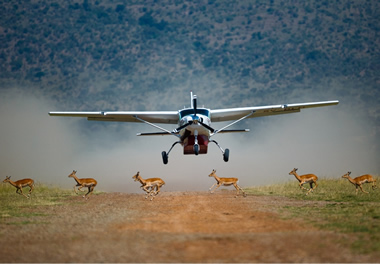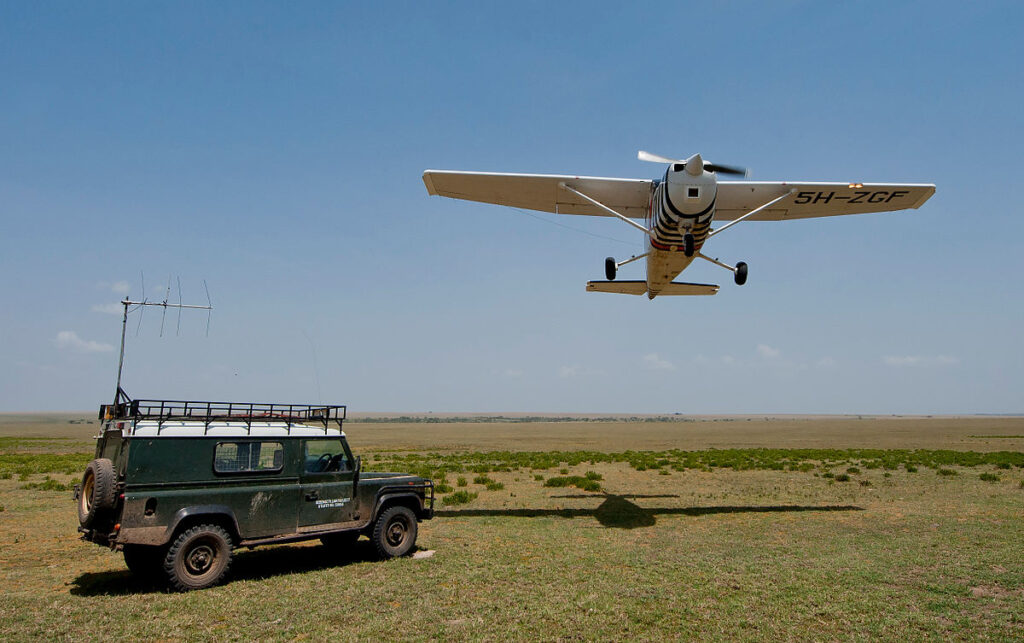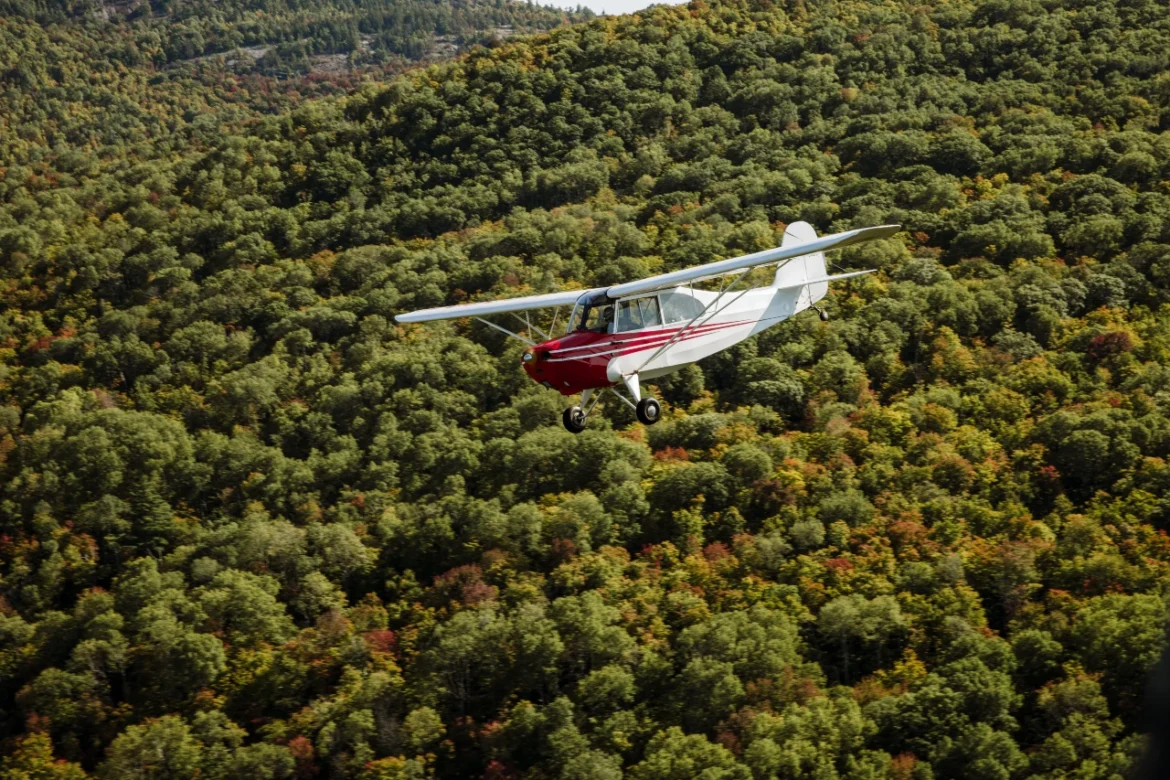African safaris offer a unique and enthralling opportunity to experience the continent’s diverse wildlife and stunning landscapes.
While most people usually imagine the classic open -sided 4×4 safari jeep when they think of safari vacations in Africa, there is another dimension to this adventurous journey – the flying safari – or fly-in safari. This refers to the use of small planes to travel from one destination to another while on safari.
This use of light air crafts not only provides travelers with a birds-eye view of the beautiful African topography, but it also reduces lengthy ground travel times, besides allowing access to remote areas with minimal road infrastructure.
However, as with any form of adventure travel, safety becomes a matter of concern.
In this article, we will look into and explore the safety aspects of the light aircraft used in African safaris. We shall also look into the protocols adhered to, and the potential risks involved when using light aircrafts while on safari.
Understanding Light Aircrafts in African Safari Context
Light aircraft, often referred to as bush planes, are an integral part of African safaris – mostly the luxury safari tier. This is so particularly in countries such as Kenya, Tanzania, Botswana, and Namibia. The light air crafts are typically small planes, seating between 5 to 12 passengers, sometimes up to 19 passengers, that are well-adapted to short take-offs and landings on the unimproved airstrips commonly found in the African bush.
Safety on Light Air Crafts
Light Air crafts – otherwise known as bush Planes, are used for flying between remote safari destinations. Bush planes are adapted to short take offs and landings. Bush plane pilots undergo rigorous training to be able to tackle these bush airstrips.

Safety Measures and Regulations on Bush Planes
Aircraft safety on African safaris relies on various stringent measures and regulations put in place to ensure the highest levels of safety. In all the countries in which these kinds of planes are used for safaris, they are subjected to regular tests and inspections that ensure world class levels of safety.
Maintenance & Inspections
All light air crafts that carry tourists to various safari destinations are subject to rigorous maintenance schedules, and pre-flight inspections are mandatory.
Maintenance often exceeds the manufacturers’ recommended guidelines, with some operators choosing to service their aircraft after fewer flight hours than suggested.
Qualified Pilots
Pilots of these aircraft are well-trained professionals with experience in flying in the unique African environments. In addition to their pilot qualifications, they typically have specific bush flying training and a solid understanding of local weather conditions and topography.
Regulated Operators
Safari flight operators are regulated by national aviation authorities, such as the Kenya Civil Aviation Authority (KCAA) or the South African Civil Aviation Authority (SACAA). These bodies oversee operators’ adherence to international safety and operational standards.
Communication & Navigation Equipment
Light aircraft are equipped with radio communication systems and navigational aids. This ensures constant communication with ground control and accurate navigation, even in the more remote areas of the African wilderness.
Emergency Equitpment
All planes are equipped with emergency supplies, including first aid kits and, in some cases, survival gear.
IMPORTANT TIP
Technology keeps changing. This helps improve airplane safety. Navigation systems today are much better. But the most important safety device in the aircraft is a well-trained, current and competent pilot.

Potential Risks and Mitigation Measures
Despite these safety precautions, there are inherent risks associated with flying, particularly in light aircraft over diverse and sometimes challenging terrain. Understanding these risks and the steps taken to mitigate them can offer peace of mind to travelers.
Weather Conditions
Weather plays a significant role in flight safety. Sudden storms, heavy rains, or strong winds can affect visibility and aircraft control. Pilots are trained to handle such conditions, and flights are usually rescheduled if the weather is deemed unsafe.
Remoteness of Safari Locations
The remoteness of some safari locations can present challenges, particularly if there’s an emergency. However, pilots and safari operators are trained in emergency procedures, and evacuation plans are in place in the unlikely event they are required.
Unimproved Airstrips
Bush airstrips are often short, uneven, and lack the infrastructure found at larger airports. Bush pilots are specially trained to take off and land in such conditions, and airstrips are carefully maintained and regularly inspected to ensure they are safe for use.
What is your take Away?
The use of light aircraft in African safaris not only offers an unparalleled perspective of the magnificent African landscape but is a practical and time-efficient way of travelling between parks and reserves. While flying, like any mode of transport, carries inherent risks, safari flight operators in Africa adhere to stringent safety protocols and standards, and are regulated by national aviation authorities to ensure passenger safety.
The pilots are seasoned professionals, often with extensive experience flying in the unique African environment. The aircraft are regularly maintained and outfitted with essential safety equipment. Furthermore, the safari flight operators have well-established safety measures and emergency procedures, ensuring they’re prepared to handle various situations.
However, it’s vital for travelers to do their research and choose a reputable safari operator, one that prioritizes safety and demonstrates a clear commitment to maintaining the highest standards. This includes asking questions about the operator’s safety record, the training their pilots receive, and the specific aircraft’s maintenance protocols.

Flying over Africa offers an exhilarating experience that provides a unique vantage point to appreciate the vast beauty of the continent, and the use of light aircraft in African safaris has an impressive safety record. However, as is the case with all aspects of travel, it’s essential to be informed and prepared. Armed with the right information, you can embark on your flying safari adventure with confidence and peace of mind.
In conclusion, while there is no such thing as a risk-free adventure, it is fair to say that with the robust safety measures in place and the continuous efforts to adhere to international aviation safety standards, the light aircraft used on African safaris are safe. The thrill of soaring over vast savannahs, watching the drama of life in the wild unfold beneath you, and landing in some of the world’s most unique locations, makes flying safaris an unforgettable part of the African safari experience.

